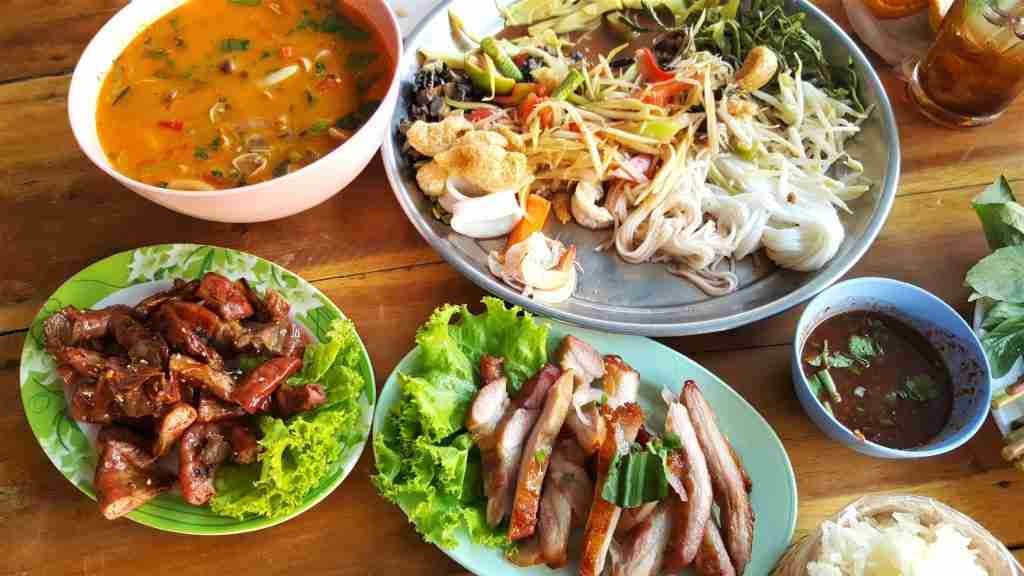
Navigating Bangkok’s Streets
Traffic Overview
Bangkok, a bustling metropolis, grapples with heavy traffic congestion throughout the day, including siam square, siam station, public transport, and motorcycle taxis. The city is notorious for its unpredictable traffic patterns and common traffic jams during rush hours in the morning and evening. This can significantly impact travel times and plans.
One must be mindful of the peak hours, traffic jams, which typically span from 7:30 AM to 9:30 AM and 5:00 PM to 8:00 PM. It’s advisable to steer clear of traveling by buses during these periods to minimize time spent stuck in traffic. Planning activities around these peak hours can help make the most of your time in the city.
Key Routes
Navigating Bangkok involves utilizing major roads like Sukhumvit, Silom, and Ratchadaphisek as key routes for getting around efficiently. Expressways such as the Don Mueang Tollway offer faster travel between districts, making them essential for bypassing congested areas.
To avoid getting caught up in heavy traffic on popular routes or highways, it’s beneficial to familiarize yourself with alternative pathways that can provide smoother journeys through this vibrant city.
Public Transportation System
BTS Skytrain
The BTS Skytrain is a popular choice for navigating Bangkok, offering a convenient way to bypass the city’s notorious traffic. Operating from early morning until midnight, it covers many of the city’s key areas. Travelers can opt for single journey tickets or rechargeable Rabbit cards, ensuring seamless travel experiences.
For example, imagine effortlessly zipping above Bangkok’s bustling streets as you head towards iconic landmarks like Siam Paragon and Chatuchak Weekend Market using the efficient BTS Skytrain.
MRT Subway
The MRT Subway provides an underground transportation option connecting various essential locations in Bangkok. With operating hours from 6:00 AM to midnight, it caters to both commuters and tourists alike. This makes it an excellent alternative for reaching destinations not serviced by the BTS Skytrain.
Consider exploring historic sites such as Wat Mangkon Kamalawat and contemporary attractions like Terminal 21 Mall via the reliable MRT Subway.
Buses and Shuttles
Bangkok’s extensive bus network offers affordable fares while covering diverse routes across the city. Airport shuttles provide convenient transfers between Suvarnabhumi Airport and central Bangkok. Opting for air-conditioned buses ensures a more comfortable journey during hot weather conditions.
For instance, picture yourself embarking on a cultural adventure aboard one of Bangkok’s buses as you make your way through vibrant neighborhoods such as Chinatown and Thonglor district.
River Ferries
Embrace scenic transport options with Chao Phraya Express boats and ferries that navigate along the river past major attractions. These river ferries offer an escape from road congestion while providing unique perspectives of Bangkok’s waterfront beauty.
Understanding Fares and Passes
Payment Methods
Cash is the primary payment method for public transportation fares in Bangkok. However, the city’s transit systems also support contactless payments, providing convenience for locals and tourists alike. Travelers can opt for reloadable smart cards offered by many transit options, allowing quick and easy fare payments without the need to carry physical cash. Moreover, ATMs are abundantly available throughout the city, ensuring easy access to withdraw cash specifically for transportation expenses.
Discount Cards
For frequent users of public transportation in Bangkok, purchasing discount cards can result in substantial savings on fares. Special discount cards are often available for students and seniors, offering reduced rates on transit services as a cost-effective solution. It’s essential to explore various discount card options based on the length of stay in Bangkok to choose the most suitable one that aligns with individual travel needs.
Multi-Use Passes Opting for multi-use passes provides an opportunity for unlimited travel on specific transit systems within a designated period while offering significant cost savings compared to individual ticket purchases. Travelers have the flexibility to select from daily, weekly or monthly passes depending on their duration of stay in Bangkok. Furthermore, it’s advisable to check if multi-use passes include additional perks such as discounts at partner establishments.
Tips for Efficient Travel
Avoiding Congestion
To avoid heavy traffic congestion in Bangkok, plan your travel outside peak hours. Utilize real-time traffic apps to navigate around congested areas and find alternative routes. For short distances, consider walking or cycling instead of relying solely on motorized transportation.
Safety Precautions are crucial while navigating Bangkok’s public transportation system. Stay vigilant against pickpocketing and safeguard your personal belongings at all times. When crossing busy streets, be cautious and adhere to pedestrian signals at intersections to ensure safety. Familiarize yourself with emergency protocols and locate emergency exits at transit stations for added security.
Navigation Apps
Install navigation apps like Google Maps or Citymapper for real-time updates on public transit schedules and routes in Bangkok. These GPS-enabled apps help track your location easily, allowing you to find nearby transit stops or stations effortlessly. Have offline maps ready as a backup in case of limited internet connectivity during your travels.
Taxis and Tuk-Tuks
Hailing a Taxi
When getting around Bangkok, prioritize metered taxis with visible license plates. Always ensure the driver activates the meter before your journey to avoid potential scams. Beware of unregistered taxis or drivers refusing to use meters, which could lead to overcharging.
Tuk-Tuk Etiquette
Negotiate fares upfront when riding a tuk-tuk in Bangkok to prevent misunderstandings at the end of your trip. While enjoying the open-air experience, be mindful of air pollution and consider wearing a mask for protection. Due to their open design, tuk-tuks are best suited for short distances.
Fare Negotiation
Engage in polite negotiation when agreeing on fares with tuk-tuk or taxi drivers. It’s essential to be aware of standard fare ranges for common routes to avoid overpaying during your travels around Bangkok. Keep small denominations of Thai Baht handy for paying exact fares without any inconvenience.
Motorbike Taxis and Rentals
Finding Motorbike Taxis
Look for motorbike taxi stands near busy intersections or outside transit stations. Negotiate fares before hopping onto a motorbike taxi; ensure clarity on the destination and price. Wear helmets provided by motorbike taxi drivers for safety during rides.
Rental Process
Renting a car or motorcycle requires a valid international driving permit alongside your home country’s license. Verify rental terms, insurance coverage, and vehicle condition before finalizing any rental agreements. Consider renting bicycles from reputable shops offering well-maintained equipment.
Always prioritize safety by ensuring that the vehicles are in good condition and that you have the necessary permits to operate them legally in Bangkok.
Safety Gear
Prioritize safety by wearing helmets when riding motorcycles or bicycles in Bangkok. Invest in high-quality helmets that meet safety standards to protect against head injuries. Reflective gear enhances visibility during nighttime cycling or motorcycling trips.
Remember, whether you’re using motorbikes, bicycles, taxis, tuk-tuks, or other forms of transportation in Bangkok, prioritizing safety is crucial for an enjoyable and secure travel experience.
Alternative Transport Options
Bicycle Rentals
Exploring Bangkok’s neighborhoods at a leisurely pace is possible by renting bicycles from local shops or bike-sharing services. Stick to designated bike lanes, especially along riverside paths or parks, for a safer and more enjoyable ride. Taking advantage of guided bicycle tours offered by experienced local operators can provide valuable insights into the city’s culture and history.
When considering transportation options in Bangkok, walking paths offer an excellent way to discover pedestrian-friendly areas like Lumphini Park or Sukhumvit Road. These areas are ideal for strolling around the city and experiencing its vibrant atmosphere up close. It’s essential to stay hydrated while walking; carrying water bottles during hot weather conditions is crucial for comfort and well-being. Furthermore, relying on shaded pathways whenever possible can help escape direct sunlight exposure and make the walk more pleasant.
Utilizing ride-sharing apps like Grab presents another convenient option for getting around Bangkok without dealing with public transportation hassles. Keep an eye out for promotional codes or discounts offered by ride-sharing companies to enjoy cost-effective trips within the city. It’s important to ensure that you have access to mobile data or Wi-Fi when using ride-sharing services so that you can easily book rides as needed.
Cultural Considerations
Local Customs
When getting around Bangkok, it’s crucial to respect local customs. Dressing modestly when visiting temples or religious sites is essential. Remember to greet locals with a polite “wai” gesture, and avoid pointing your feet towards people or sacred objects, as it can be seen as disrespectful.
For example, wearing appropriate clothing like long pants and covering shoulders when visiting the Grand Palace or Wat Pho demonstrates respect for Thai customs. Using the traditional Thai greeting “Sawasdee ka/krab” along with the wai gesture shows cultural awareness.
Language Tips
Learning basic Thai phrases can greatly facilitate communication with locals during your travels in Bangkok. Carrying a pocket phrasebook or using language translation apps can help bridge language barriers when interacting with non-native English speakers.
For instance, knowing how to say “hello” (“Sawasdee”), “thank you” (“Kob khun”), and “excuse me” (“Khor thot”) in Thai can go a long way in showing respect for the local culture. Utilizing phonetic guides from travel resources will also aid in pronouncing place names correctly.
Respectful Travel
Maintaining cleanliness by properly disposing of waste is crucial while navigating Bangkok. Look out for designated trash bins at transit stations and public spaces to keep the city clean. Supporting local businesses by patronizing street vendors near transit hubs without causing disruptions is another way to show respect while traveling.
Planning Your Route
When getting around Bangkok, it’s essential to plan your route efficiently to explore the city’s popular destinations. You can delve into vibrant markets like Chatuchak Weekend Market, accessible via public transport links such as the BTS Skytrain or MRT Subway. These convenient transit options make it easy for visitors to navigate through the bustling city.
You can uncover historical landmarks like the Grand Palace by utilizing river ferries along Chao Phraya River routes. This mode of transportation not only offers a scenic experience but also ensures access to significant cultural and historical sites across Bangkok. Moreover, venturing into diverse neighborhoods like Chinatown using buses or tuk-tuks provides an immersive cultural experience that allows travelers to soak in the local atmosphere and traditions.
Study comprehensive transit maps available at BTS Skytrain, MRT Subway stations, bus terminals, and ferry piers for route planning guidance. These maps offer a detailed overview of the various transit options available in Bangkok and help visitors understand how different modes of transportation connect throughout the city. Familiarize yourself with color-coded lines representing different transit systems on maps to navigate seamlessly across Bangkok.
Frequently Asked Questions
How do I navigate Bangkok’s streets effectively?
To navigate Bangkok’s bustling streets, consider using a combination of public transportation, such as the Skytrain or subway, and walking. Familiarize yourself with landmarks and major roads to aid in orientation. Utilizing mobile map applications can also be incredibly helpful.
What are some alternative transport options in Bangkok?
In addition to traditional modes of transport like taxis and tuk-tuks, Bangkok offers unique alternatives such as river boats and motorbike taxis. These options provide an exciting way to explore the city while avoiding traffic congestion on the roads.
What cultural considerations should I keep in mind when getting around Bangkok?
Respect for local customs is essential. When using public transportation or interacting with drivers, it’s important to remain patient and courteous. Dressing modestly is advisable when visiting religious sites or traveling through more conservative areas of the city.
How can I efficiently plan my travel route within Bangkok?
Efficient travel planning involves utilizing available resources such as maps, apps, and online guides to determine the best routes between destinations. Taking into account factors like traffic patterns and time of day can help optimize your travel experience throughout this vibrant city.
Are there any tips for understanding fares and passes for public transportation in Bangkok?
Understanding fare structures for different modes of transport is crucial. Consider purchasing reloadable transit cards or exploring daily pass options based on your anticipated usage during your stay in Bangkok. This approach often provides convenience and cost savings compared to individual ticket purchases.



